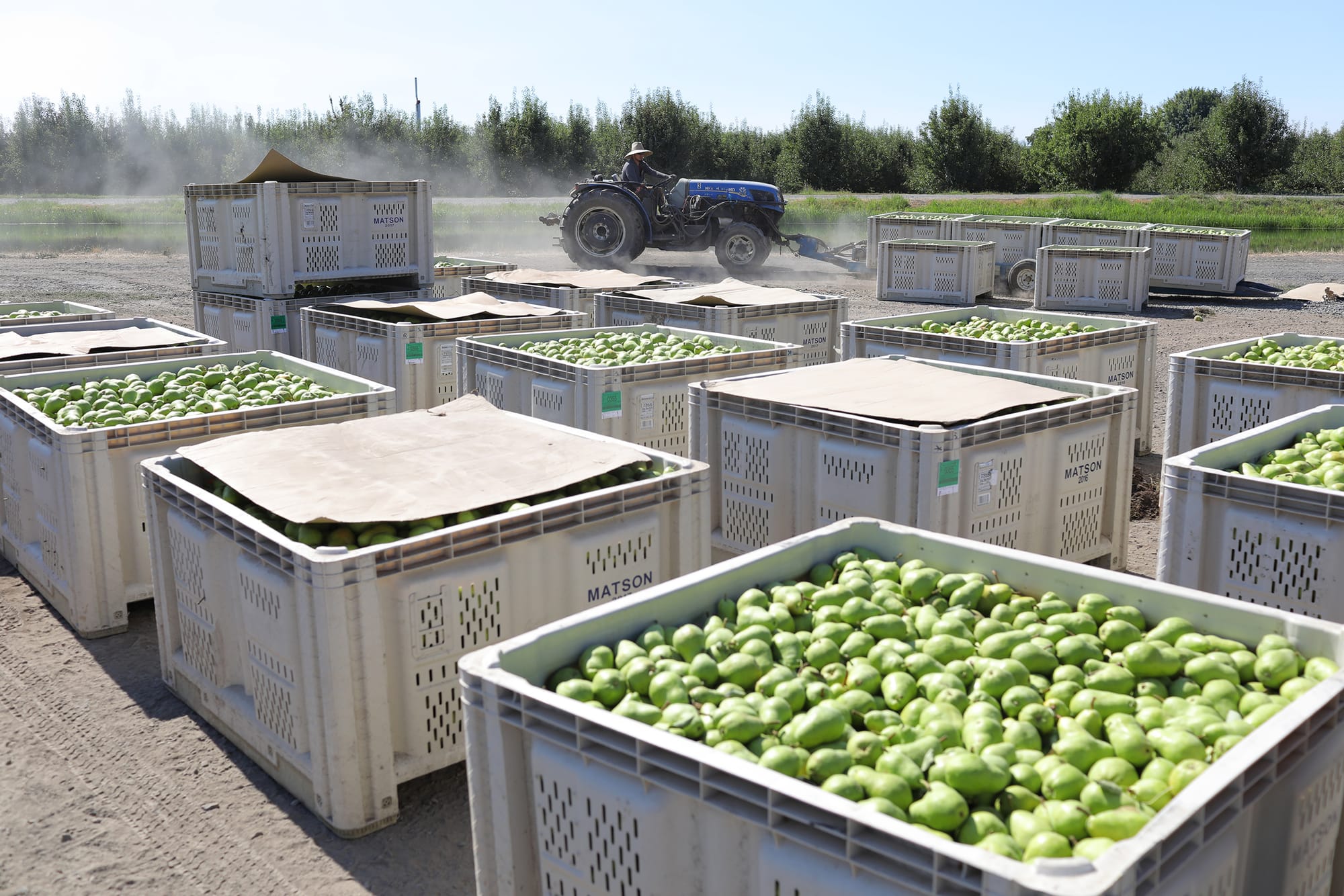Washington’s agricultural officials and growers have often lamented the challenges of staying solvent. Everything from rising costs of labor and raw materials to bad weather has prompted many smaller farms to go out of business, contributing to massive consolidation in the industry.
The industry also has faced uncertainty under the Trump administration’s policies on foreign tariffs, and their impact on once-reliable export markets for American agricultural products.
But one Trump policy has been cheered by some in the agricultural industry: House Resolution 1, also known as the One Big Beautiful Bill Act, which includes funding for crop insurance, trade promotion and research.
These agricultural provisions in the bill include items that have generally been part of the Farm Bill, set to expire in September. Reauthorized every five years, the comprehensive legislation outlines and funds a variety of agricultural and food programs.
“We view it as good news that these investments were provided in a challenging time for the industry,” said Kate Tynan, senior vice president of the Northwest Horticultural Council, a Yakima-based organization that lobbies on behalf of the tree- fruit industry on federal policy matters.
U.S. Reps. Dan Newhouse (R-WA-04) and Michael Baumgartner (R-WA-05) see the agricultural provisions as a win for their districts. Both serve constituents in major agricultural areas, and have received strong criticism for supporting the budget reconciliation bill, which makes significant cuts to nutrition and federally funded health care programs.

Where is the money going?
Of the more than $66 billion allotted to agricultural programs over the next decade, the majority supports crop insurance, a key safety net for wheat, soybeans and corn operations. The bill increases the base market price at which crop insurance goes into effect; for wheat, the jump is from $5.50 to $6.35 per bushel.
The increase won’t address all losses for wheat growers, but it’s a notable improvement, said Michelle Hennings, executive director of the Washington Association of Wheat Growers. More than 90% of Washington wheat growers use crop insurance.
The bill also reduces the portion of crop insurance premiums growers pay.
“Crop insurance is so important for us,” Hennings said. “We can’t control the weather, we can’t control … the quality of wheat when we have drought. That’s when we utilize crop insurance.”

Washington tree-fruit growers — of cherries, apples, pears and peaches — also stand to benefit from the legislation, which earmarks more than $2 billion for additional trade promotion and research.
That could be significant for Washington’s agricultural producers, whose crops are exported in large numbers: roughly 30% of Washington apples and 90% of Washington’s wheat crop.
The bill also funds research into mechanization for the tree-fruit industry.
“Hand labor is never going to be replaced by mechanization, but [it] certainly will be part of the puzzle for growers to move forward in challenging times,” said Tynan of the Northwest Horticultural Council.
What’s next
While the reconciliation bill funds agriculture, it doesn’t fully address growers’ needs, which could be supported by reauthorizing the Farm Bill or passing other legislation, said T. Randall Fortenbery, professor of the school of economic sciences at Washington State University and director of the IMPACT Center, which researches economic, social, political and technical problems that affect the competitiveness of Washington’s agriculture and related sectors.
There are rules for what a budget reconciliation can cover. Anything involving crafting federal policy outside of budgeting is not allowed.
For Tynan of the Northwest Horticultural Council, additional legislation is still needed to outline the administration of several programs, including trade promotion.
Another key program is conservation funding, which would help growers meet Washington air and water quality requirements, which tend to be higher than the federal standard, Hennings said.
“We’re navigating different waters, having part of it in one bill and trying to get [other policies] in another bill,” she said.
Using budget reconciliation, which requires only a majority vote-plus-one to pass, is a notable departure for crafting and passing federal agricultural policy.
The Farm Bill — which generally lasts five years and requires reauthorization — would require more votes. The bill usually relies on the support of bipartisan coalitions, particularly between rural Democrats and Republicans, Fortenbery said.
The Farm Bill has historically drawn bipartisan support from representatives of more urban locales through its inclusion of food benefits for low-income families through the Supplemental Nutrition Assistance Program, or SNAP, he said. A change in Congress’ makeup could alter support for agricultural policy in a future budget reconciliation, Fortenbery said.
“If you end up with a Congress and an administration that aren’t very agricultural-friendly, you can end up with legislation that would not be very supportive of agriculture,” he said.



